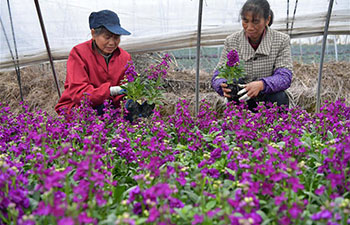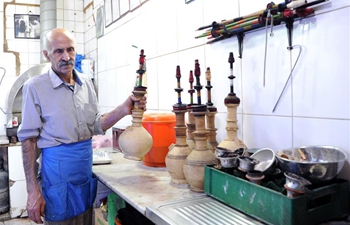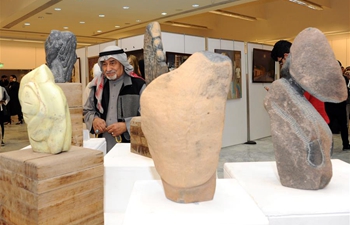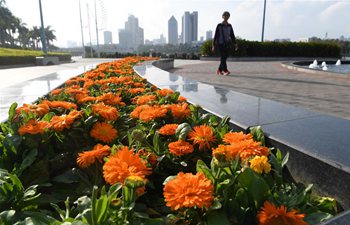TAIYUAN, Dec. 24 (Xinhua) -- It was a big surprise for 71-year-old farmer Chen Suyuan that the unsavory noodles made of tree bark in his childhood could become a popular local specialty and make him rich.
Every few days, Chen sells his self-made elm tree bark noodles to the souvenir stores and restaurants in Dazhai, a village deep in the mountains of north China's Shanxi Province.
The brownish-black noodles were once a famine food from the 1950s to the 1960s when Chinese were faced with severe food shortages. To feed themselves, farmers in the north peeled off the hard outer bark of elm trees and harvested the cambium inside. They dried and ground it before mixing with corn or wheat flour.
Born in 1949, Chen still remembers his childhood starvation like it was yesterday. "There were nine siblings in my family. We always felt hungry. The elm tree bark noodles helped us get through the toughest days," he said.
Difficult to chew and digest, the noodle made of tree bark is by no means delicious. But Chen's family did not give up this food until China adopted the household contract responsibility system in the early 1980s.
The property rights of rural farmland have been divided into two layers: the ownership right that is collectively owned by a rural community, normally a village, and the use right, which is held by an individual household that contracts a piece of farmland from the village.
Grain production has picked up since then. Chen and his wife contracted farmland covering an area of around 0.53 hectares in Zhaobi Village where they lived. They no longer had to worry about going hungry.
Elm tree bark noodles gradually disappeared from Chinese people's dining tables. People's incomes have risen, so too have their food choices. But richer ingredients have led to an increase in obesity.
Statistics released by the Chinese Center for Disease Control and Prevention in 2017 showed 30 percent of Chinese adults were overweight, and 11.9 percent obese.
With high dietary fibers and low fat, food such as edible wild herbs, steamed cornbread and tree bark noodles with a bitter taste of nostalgia have returned to dining tables once again.
"Tourists always tend to buy several bags of elm tree bark flour because they think it is healthy and can evoke a bygone era," said Zhang Jingjing, a 20-year-old owner of a local specialty store in Dazhai.
Wang Yuanxu, a 65-year-old tourist, ordered a bowl of tree bark noodles in Dazhai. "It was nice to see the noodles still exist. The taste took me back to my childhood, and I will cherish my present life," Wang said.
From 2001, some urban dwellers began to drive to Zhaobi Village to buy elm tree bark noodles from Chen.
In his village, only three households are able to process the tree bark noodles, each with an annual output of up to 300 kg. The once undesirable noodles are sold at a price up to 20 yuan (around 2.85 U.S. dollars) per kg, more expensive than the wheat flour that Chen once dreamed to eat when he was a kid.
Zhao Haifeng, vice chairman of the Shanxi Nutrition Society, suggested appropriate eating of tree bark noodles which can reduce blood glucose and cholesterol but are hard to digest.
After several decades, the taste of the elm bark noodles is no longer the same as that in the past. "I found it hard to swallow the coarse noodles when I was young. Now my wife makes them for me almost every day, and they taste scrumptious," Chen said.

















